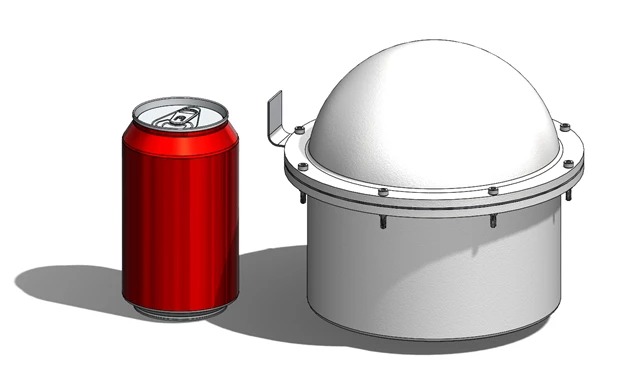With temperatures plunging to -232 °C (-387 °F), the lunar night is not a friendly place for electronics. Space technology company Masten has developed a new way to tackle this problem in the form of its Nighttime Integrated Thermal and Electricity (NITE) system, which uses chemical reactions to keep lander electronics warm until the lunar dawn.
Though the Moon is only a quarter of a million miles away from the Earth, it would be hard to be more different. There's only one-sixth gravity, the little water there is in the shadows of polar craters or locked in rocks, the soil is made of incredibly abrasive particles that adhere to all manner of materials through static electricity, the surface is constantly bombarded by cosmic rays, and the atmosphere is so tenuous it's, for all intents and purposes, a vacuum.
All of this would be bad enough for any lander that sets down there, but the Moon also has remarkable temperature extremes. During the day it's hotter than boiling water and during the night it's hundreds of degrees below zero. This means a spacecraft on the Moon during the two-week-long night stands a very high probability of its batteries and electronics freezing beyond recovery.
Since the 1960s, space engineers have been faced with two alternatives. They either had to build a spacecraft that would only last for the maximum of 14 days of sunlight and accept that it would be destroyed that night, or work on ways to keep it warm until sunrise.

The usual heating method used by American, Russian, and Chinese missions has been to equip landers and instrument packages with radiothermal generators (RTGs), which use the decay of radioactive elements for heat and sometimes electrical power.
A more recent alternative has been to use lithium-ion or alkaline batteries, which can hold a large electrical charge. These aren't nearly as efficient as the nuclear versions, require large battery banks as well as a system to circulate heat, and must be recharged using solar panels each day, but they are cheaper, do not involve problems with nuclear fuel scarcity or radiation, and carry less political baggage.
An updated variation on Masten's Metal Oxidation Warming System (MOWS), NITE takes another approach to the warming problem by using metals and left over oxidizer from the landing craft's propulsion system, which are used to generate an exothermic chemical reaction to produce both heat and power through the lunar night. During the day, the system is shut down to prevent overheating.
According to Masten, NITE has the advantages of producing more heat than an equivalent battery system at 1,900 watt hours per kilogram, but is seven times lighter. It can warm landers and other craft or equipment for over a year with sufficient onboard oxidizer or oxygen from lunar water, but is about US$50 million dollars cheaper than RTGs and $10 million cheaper in terms of payload costs compared to batteries.
Masten says that it has already tested the system using various fuels and water-based circulatory systems and hopes to finalize the design by the middle of this year, with an eye toward eventual testing in the lunar environment.
Source: Masten





